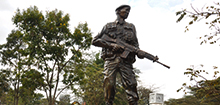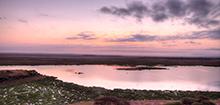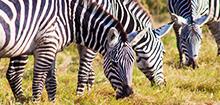
Date Published:
August 10, 2017 is World Lion Day, for people across t•••••••he world to come together to celebrate the King of the Jungle, and to help raise the awareness needed for the conservation of the world’s lions.
World Lion Day is based on the disconcerting reality that the lion population trend is decreasing, with numbers having dramatically declined to the point where the species has been listed in the CITES (the Convention on International Trade in Endangered Species of Wild Flora and Fauna) Appendix II. Species on this list are grouped in the Appendices according to how threatened they are by illegal trade in wildlife trophies. The proposal to move the African lion from CITES Appendix II to CITES Appendix I was officially defeated at the 17th CITES Conference.
Africa is home to most of the world’s lion population, with the majority being found in East Africa (KWS, 2010). Lions historically roamed the greater part of the African continent but are now limited to pockets occupying less than 20 per cent of their historic range (IUCN, 2010). There are myriad threats to the African lion: unsustainable trophy hunting, international trade in lion parts, retaliatory killing and/or ‘pre-emptive’ killing to protect livestock, loss of prey, habitat loss and fragmentation due to conversion for livestock and/or crops.
As the human population continues to expand exponentially, the big cats are forced to share living quarters with humans and their livestock. The biggest threat to carnivores in Kenya is conflict with humans. Large carnivores are becoming extremely rare outside protected areas. Cases such as the 2012 killing of six lions which strayed from Nairobi National Park by disgruntled locals, who speared the cats to death as a result of preying on livestock, are an example of why protecting the lion remains a priority.
The current estimate of lion population stands at around 2,000 individuals (2007). As a top predator in the food chain as well as being a major contributor to Kenya’s GDP through foreign exchange earnings obtained from the tourism sector, the conservation of Panthera leo holds a special place on the KWS bucket list.
KWS has adopted various strategies to help communities living close to wildlife areas deal with losses brought about by carnivores. These include:
Helping communities in building predator proof bomas
Collaring of conflict animals using satellite collars to monitor movement
Education and awareness campaigns on good animal husbandry
Use of visual deterrents close to livestock bomas (flash lights, fires, lanterns, scarecrows…)
Use of guard dogs
Use of ‘noise makers’ to scare away approaching predators
The Wildlife Conservation and Management Act 2013 provides for compensation on cases of depredation on livestock.
KWS has adopted various strategies to reverse habitat loss. The launch of the Wildlife Migratory Corridors and Dispersal Areas report in July 2017 saw conservation stakeholders join hands to preserve corridors used by wildlife.





